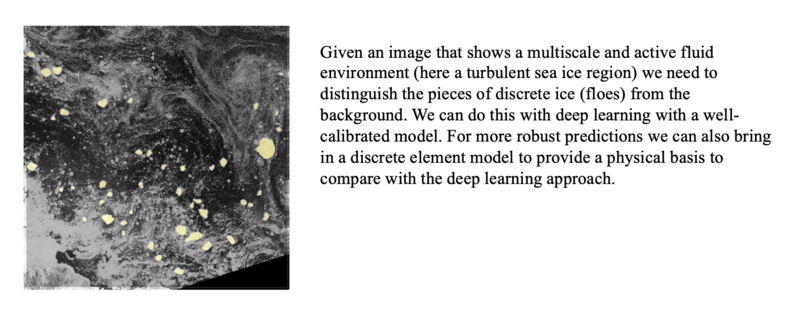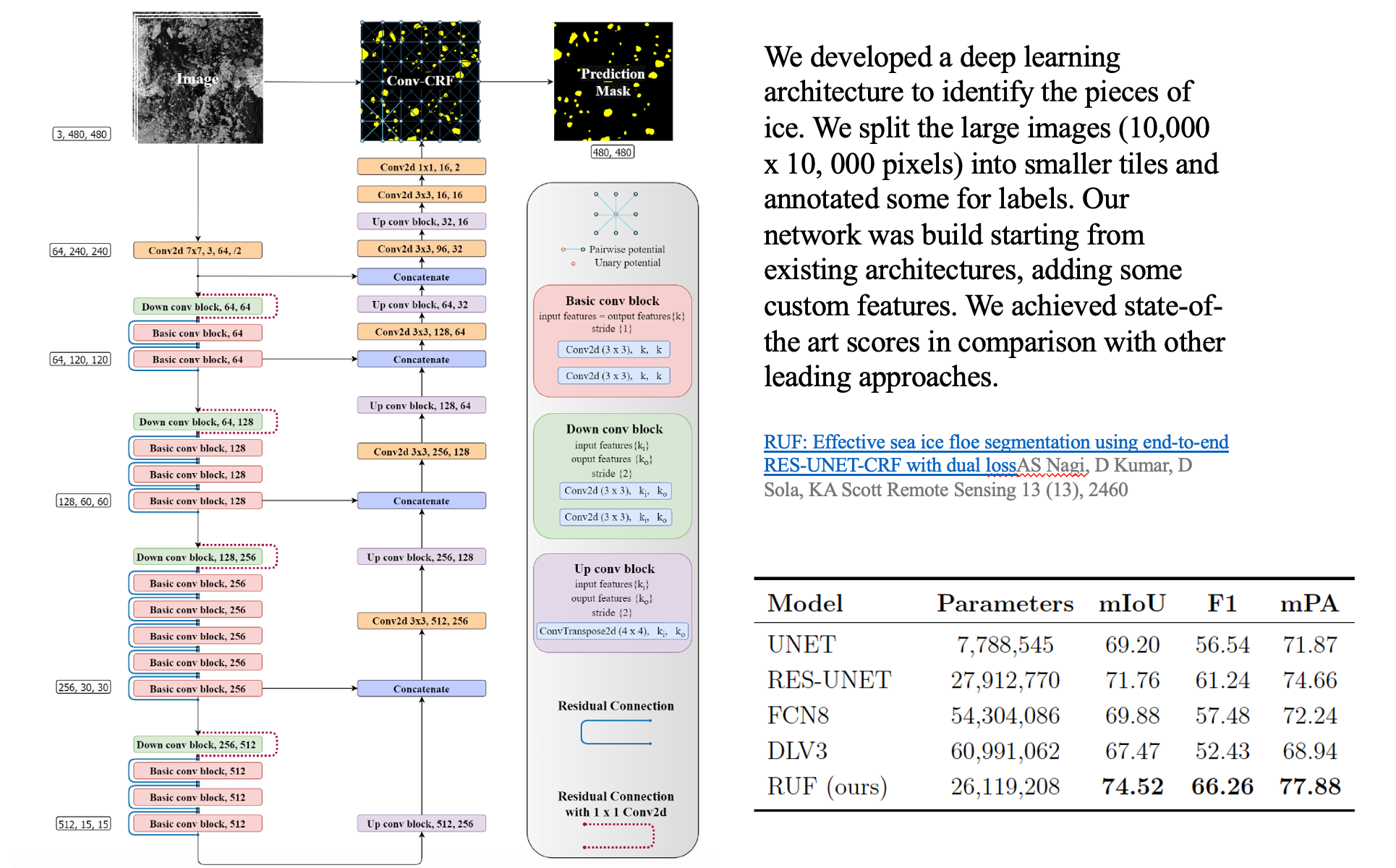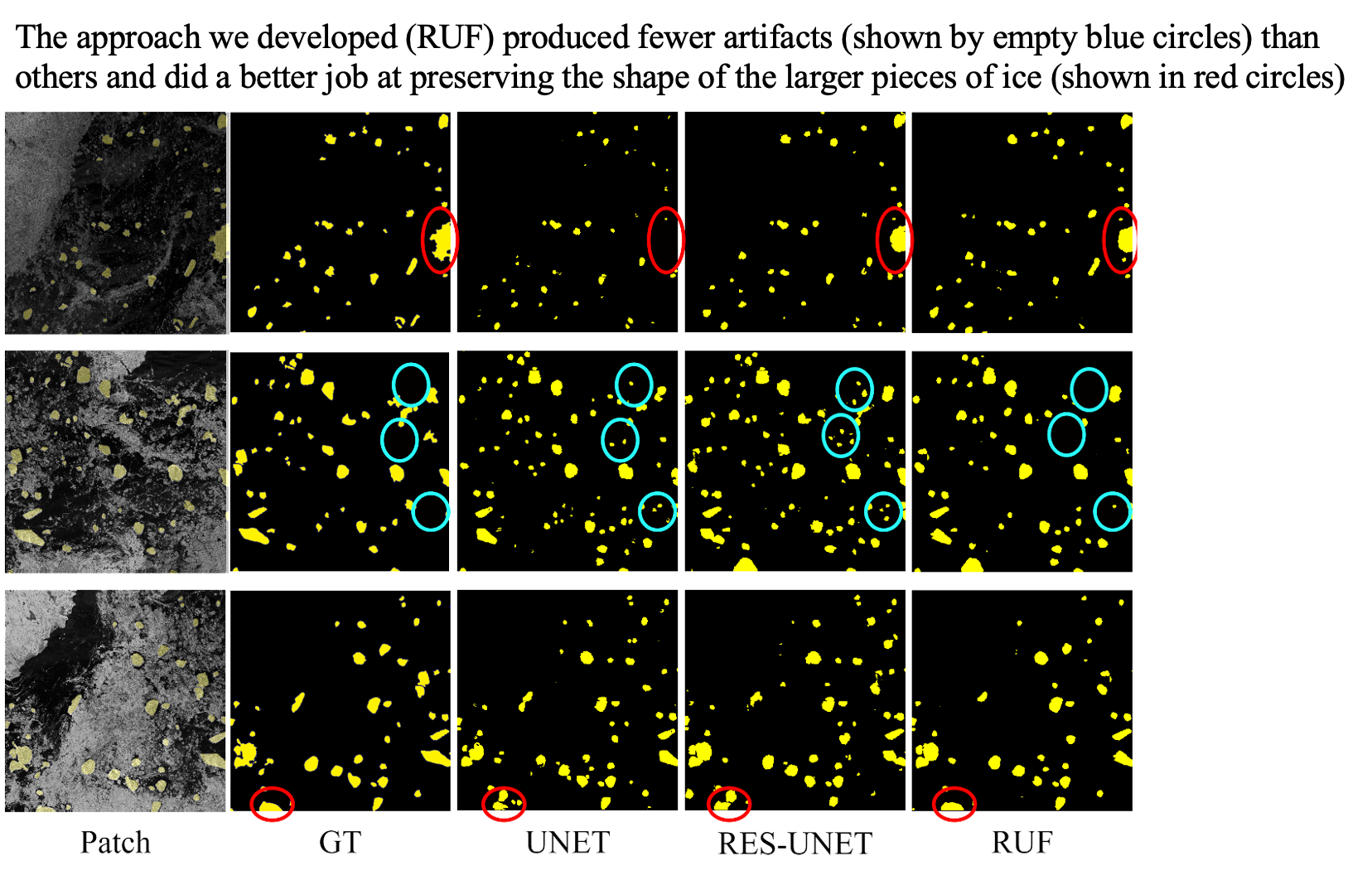Data-driven approaches are becoming indispensible tools for understanding and predicting physical problems. I use them heavily for interpretation of physical features in imagery. For example, measurements in the visible, infrared and microwave parts of of the electromagnetic spectrum.
I welcome ideas and projects about using these tools for fluid thermal systems.
For example, with Prof Zhao Pan, we are develping a sensor suite to obtain images from ships for indentification of hazards using deep learning. I am primarily interested in data-driven methods that incorporate physics to better understand and predict the system.
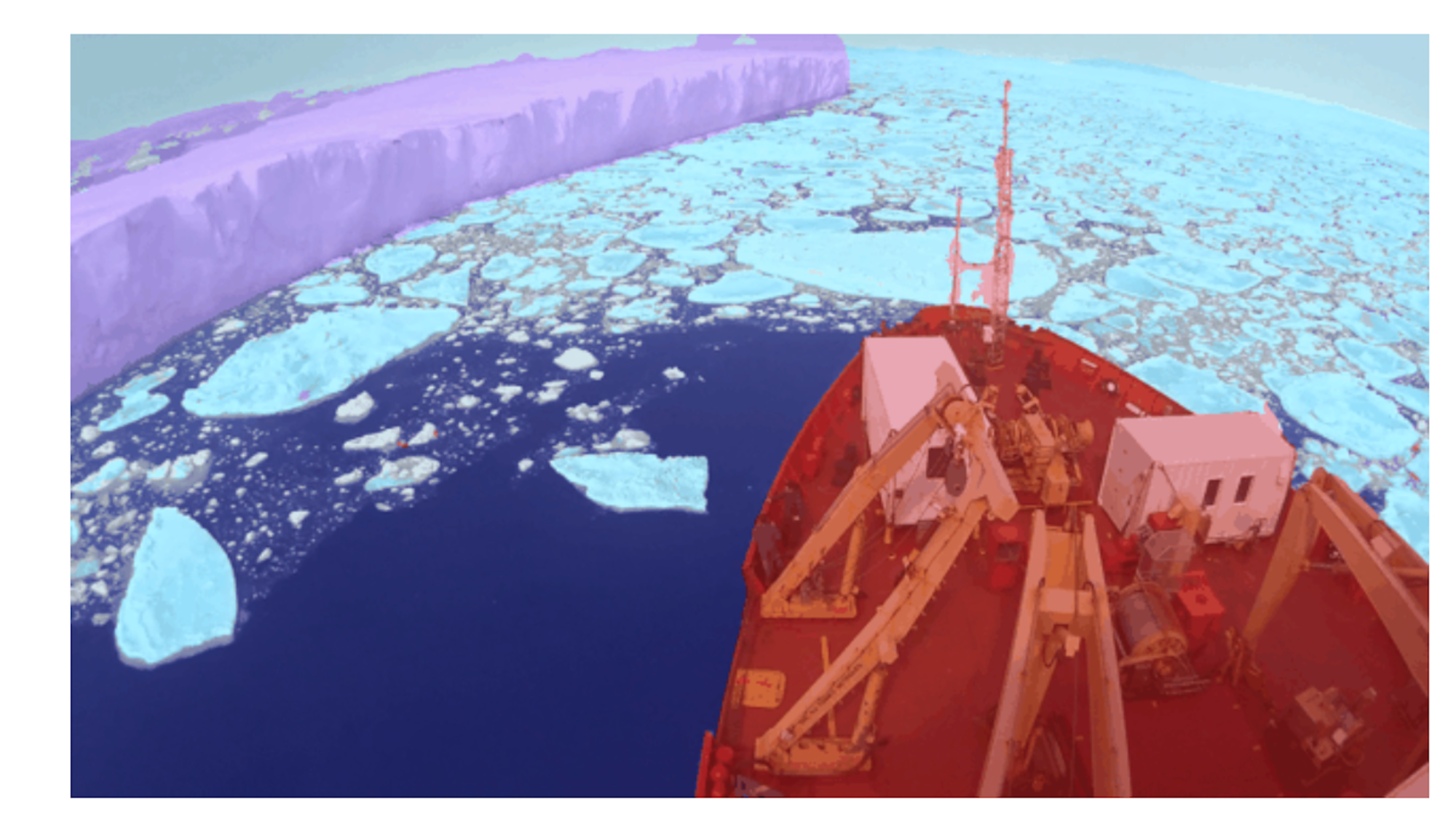
Source: Corwin MacMillian
Small object detection
Small objects, such as openings in the ice cover, or people in terrain, can be difficult to detect. However this is important for hazard detection as well as site monitoring. We have been working on ways to detecty polynyas (small openings in ice cover) using high resolution imagery and object detection networks.

Source: Neil Brubacher
Physical information in imagery using deep learning
Sea ice is a dynamic feature that is critical to global climate. It modulates energy and momentum transfer between the ocean and the atmosphere. We can visualize it very clearly using radar images, which are freely available these days. Extracting important dynamic features from these images is difficult because their signatures vary with environmental conditions and imaging geometry. We increasingly use deep learning to extract these features and ideally we can bring in physical models as well. These features are critical for heat and momentum transfer.
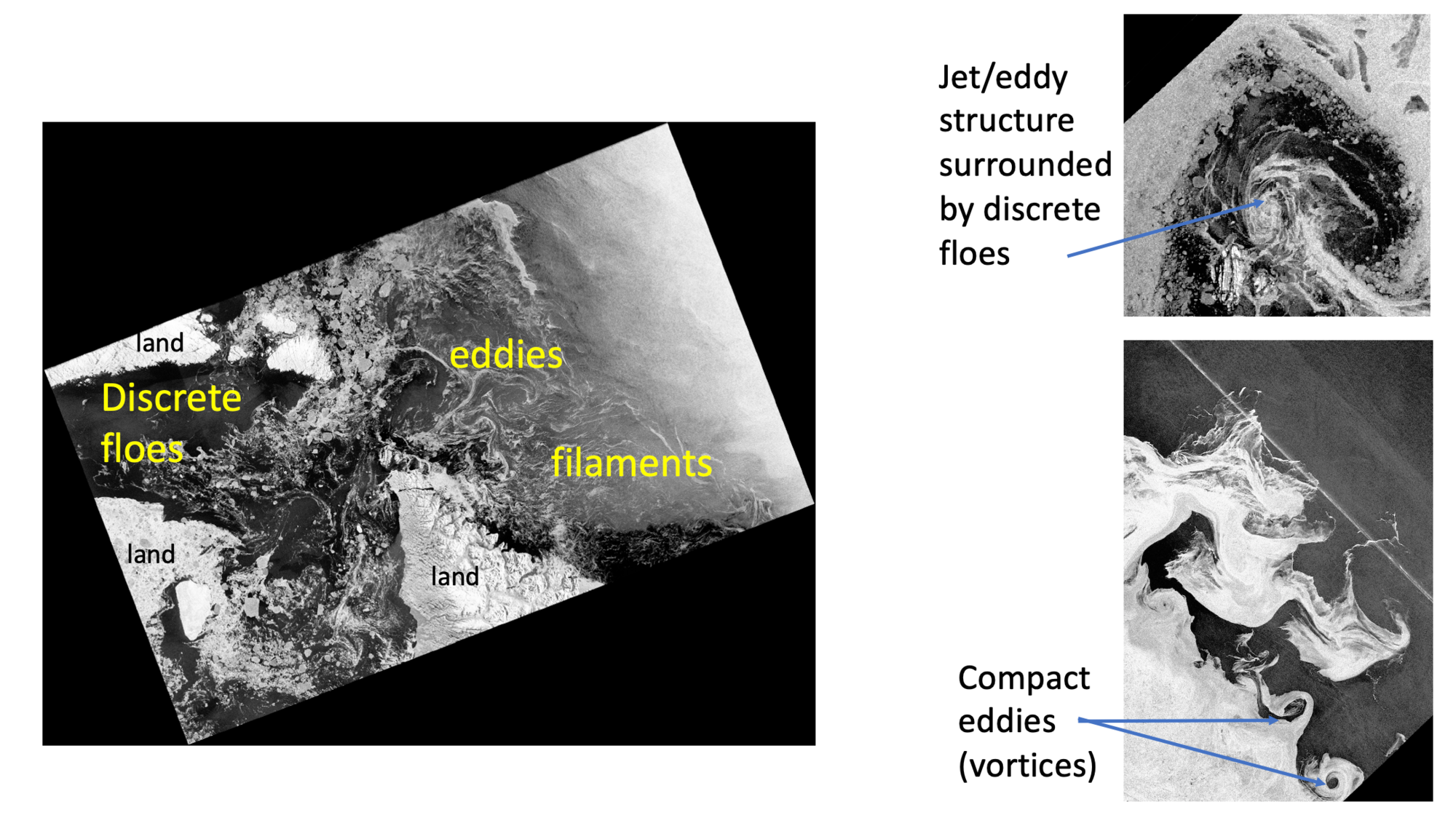
(SAR) images: Copyright MacDONALD DETTWILER and ASSOCIATES LTD (2010)-All Rights Reserved
The challenge: Identification and modelling of discrete floes
